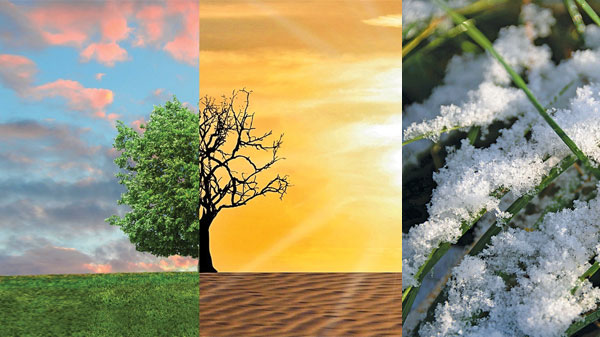While the winemaking industry is a negligible contributor to overall greenhouse gas emissions, it may turn out to be one of the early casualties of climate change. Indeed, there are already signs that the average 1 degree Celsius rise in global temperature over the course of the last century is taking its toll.

According to the International Organisation of Vine and Wine, a Paris-based intergovernmental body dedicated to viticulture and winemaking, global wine production contracted by 8 percent year-on-year in 2018 – a figure that pegs total output at its lowest level since 1961. The organisation also has no doubt as to just what the root cause is for this ongoing decline – global warming and, in particular, its deleterious effect on the world’s terroir.
As even the most casual of wine connoisseurs know, terroir is the cornerstone of every fine wine. Derived from the French term for “land” or “earth”, in the world of wine, “terroir” refers to the four elements that contribute to the taste, texture and bouquet of any given wine – the weather, the soil, the topography of a vineyard and the grape varietal itself.

For much of winemaking’s long history, the sole element controllable by humans was the initial choice of grape. Now, though, thanks to humanity’s overall impact on the climate, neither the weather nor the soil quality is exempt from man’s influence, no matter how baleful that might prove to be.
Inevitably, the repercussions of this shift in the natural order have been huge for the world’s wine-producing regions. Should temperatures become too high, for instance, the sugar content of grapes increases, while their acidity declines, inevitably compromising the quality of any wine subsequently produced. Similarly, both overly-long summers and extended winters cause soil erosion, creating weaker ecosystems and lower-quality vines. This, alone, could prove disastrous for leading producers in both Old and New Worlds.

It is no exaggeration to say that the muchloved Pinots, Cabernets and Sauvignon Blancs currently produced in such regions may soon no longer prove viable. Indeed, one recent study by the US-based National Academy of Sciences went so far as to predict that the output of the traditional grape-growing regions could shrink by as much as 80 percent before the end of the century.
Given such dire prognostications, it is no wonder that the search is now on in earnest for a solution to this looming terroir crisis. One researcher who believes she may have an answer is Elizabeth M Wolkovich, Assistant Professor of Organismic and Evolutionary Biology at Harvard University.

Maintaining that re-evaluating currently unused varietals is essential, she says: “The Old World is home to more than 1,000 different varieties of wine grapes and some of them are better adapted to hotter climates and have a higher drought tolerance than the 12 varieties that currently account for 80 percent of the international wine market.”
As well as reappraising currently neglected varietals, another school of thought suggests re-evaluating those wine-producing regions that have historically been seen as lacking. Indeed, one country whose terroir is already seen as having benefited from changing climate patterns is the UK, a producer whose output has traditionally long been derided. Addressing this very issue, Alice Feiring, a highly-regarded US wine writer, says: “England is now definitely one to watch. Many of its newly-produced sparkling wines are truly delicious.”

Another beneficiary has been Belgium, with renowned British wine critic, Jancis Robinson, confessing herself astonished by the quality of one of the country’s Chardonnays. Initially believing that so sophisticated a vintage must surely be Burgundy-sourced, she later wrote: “I still find it extremely difficult to believe that anything of such quality was produced so far off the beaten track.”
Closer to home, Asia has also seen an upturn in its winemaking fortunes, with vineyards springing up across large swathes of both India and China, locations where the hugely varied terrain has led to a number of very interesting wines being produced. Japan, long famed for its domestic sake industry, is also now home to more than 200 vineyards
As both an early casualty of climate change and one of the first to take steps to proactively evolve in response to the new environmental realities, the wine industry has been seen as sending out mixed messages. While its testimony as to the very real and damaging consequences of global warming has been welcomed, some in the green lobby believe that its advocacy of capitulation and readjustment sends out a dangerous message to other less carbon-neutral industries.
Text: Tenzing Thondup



